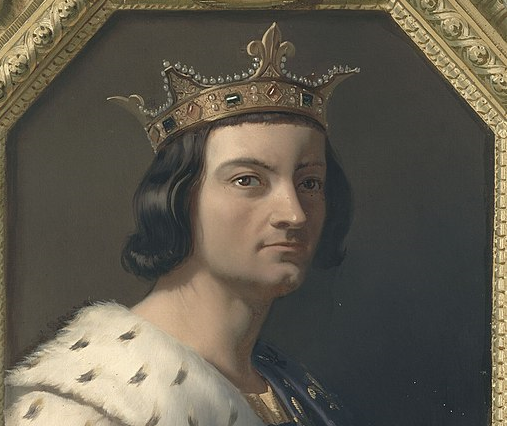Philippe III of France (born on the 30th of April 1245 and died on the 5th of October 1285) ascended to the throne upon the death of his father – Louis IX known as Saint Louis – on the 25th of August 1270. His father passed away of dysentery in Tunis during his 2nd and last Crusade, which caused the deaths of his many soldiers. Philippe himself was infected with the same malady and suffered from a severe fever and pains in his stomach, but he recovered. It is known that upon the receipt of the news of Saint Louis’ death, Philippe was speechless and grief-stricken.
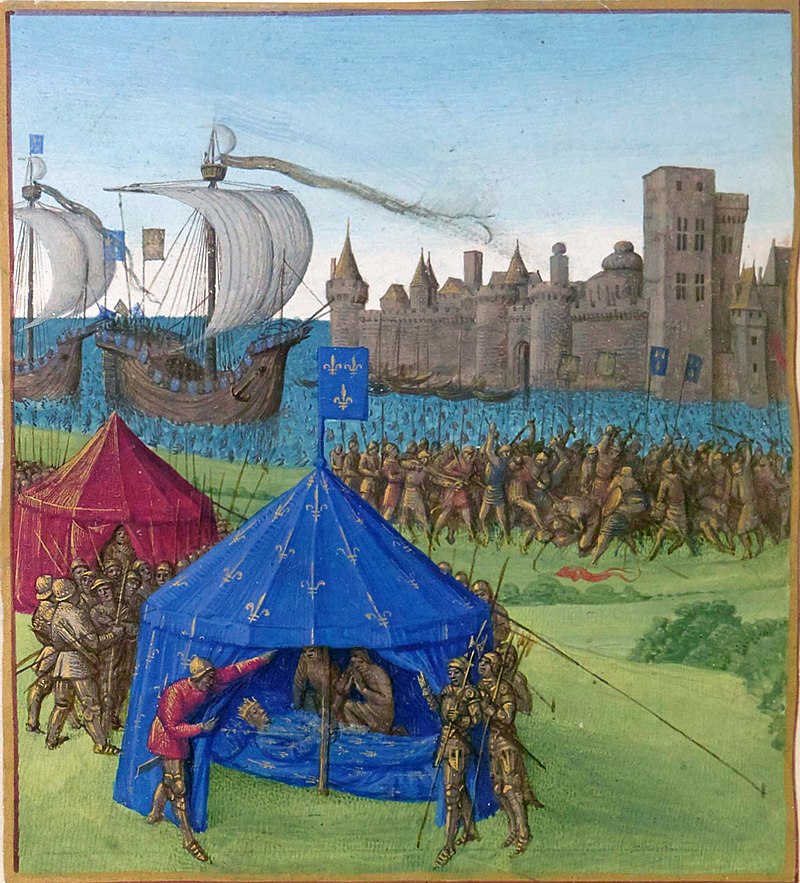
Saint Louis and Philippe were accompanied by some notable relatives. Among them there were Charles d’Anjou, who was the founder of the Capetian House of Anjou, as well as Louis’ younger brother – Alphonse, Count of Poitiers and of Toulouse. Charles d’Anjou told Philippe to act as a monarch despite the tragedy. According to his uncles’ advice, Philippe III began receiving homage from his vassals on the 27th of August despite being sick, including the counts of Artois, Flanders, Poitiers, Brittany, and many other barons. However, the severity of the new ruler’s illness compelled Charles d’Anjou to assume the command of the troops.
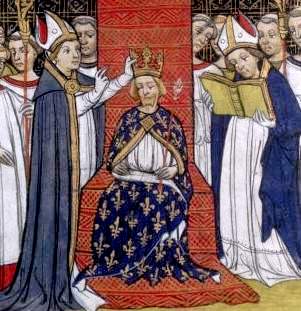
After his recovery, it took Philippe a year to return home. His first wife, Isabella of Aragon (a mother of Philippe IV the Fair) would never be crowned: on the way home the French royal party traveled through Italy, and on the 11th of January 1271 she fell from her horse while being 6 months pregnant with her 5th child, and after giving birth to a short-lived premature son, she passed away as well. He returned home alone, while Isabella’s body was first buried at Cosenza Cathedral alongside the infant and then transferred to the Basilica of St Denis. Philippe III was anointed King of France at Reims on the 30th of August 1271. He already had 4 children with Isabella: Louis (died in 1276), the famed Philip IV the Fair (died in 1314), Robert (died in 1271), and the famous Charles, Count de Valois (died in 1325), who was a father of Philippe VI.
The reign of Philippe III the Bold lasted from 1270 to 1285, but it is often viewed as an awkward continuity between the death of Saint Louis and succession of Philippe IV. This king is often scorned by critics for his weak imitation of his sainted father’s model of kingship. At the same time, the Italian poet Dante Alighieri found few faults with Philippe and referred to him as “the small-nosed” placing his spirit outside the gates of Purgatory. Dante blamed Philippe III only for the failure of his crusade against Aragon, and of course for the birth of Philippe the Fair.
Who was really Philippe III of France? In the gallery of the French monarchs, he looks like a secondary figure, whose reign seems at first glance almost unimportant compared to the reigns of his father, Saint Louis, and his son, Philippe the Fair. In fact, Philippe III is a forgotten king despite his vivid nickname he received in the 14th century – ‘le Hardi’, or the Bold. Perhaps this nickname was given to him because of his honorable conduct at the siege of Tunis after the demise of his father despite his profound grief. Gilbert Génébrard (a French Benedictine exegete and Orientalist) called this monarch ‘le Doux’ (the Soft) or ‘le Débonnaire’ (the Good-natured). Some medieval chronicles labelled him as ‘Philippepe sans désastre’ (Philippe without disaster).
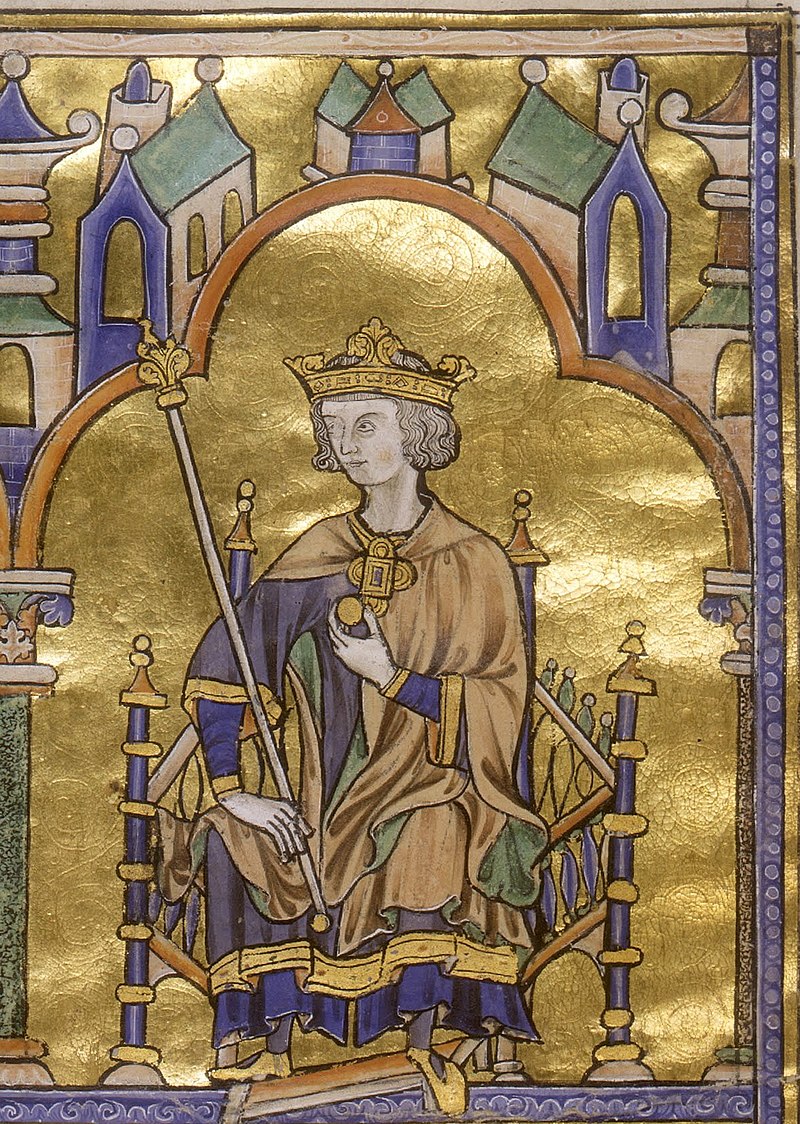
The death of Philippe’s elder brother, Louis, in 1260 made him the heir to the French throne at the age of 15. Louis IX knighted Philippe and bestowed upon him the appanage of Lorris, of Montagris, and forests in Orléanais. Saint Louis took the best care of his young children, trying to give them all a rigorous secular and religious education. Saint Louis’ offspring heard Mass and matins every day, while their father often attended sermons and explained to them various things. In concert with his queen, Marguerite de Provence, Philippe was encouraged to use the handbooks of the illustrious Vincent de Beauvais (a Dominican friar at the Cistercian monastery of Royaumont Abbe) to rely heavily upon theological and sacred texts, among them the Bible and the scholastic poetry of medieval abbots. De Beauvais was mostly known for his Great Mirror (Speculum Maius) that was widely read in the Middle Ages. This formed Philippe’s understanding of the world.
Until his ascension, Philippe was accustomed to obey his father, who was both a saint and his liege lord. How could the boy not venerate his celebrated parent? His influential and smart mother, Marguerite, attempted to make the boy obey her, but Philippe always took his father’s side during the lifetime of Saint Louis. From the memoirs of Jean de Joinville, who was one of the great chroniclers of medieval France most famous for writing the Life of Saint Louis, we learn that Philippe strove to imitate his parent in everything and felt an absolute veneration for him. Most likely, this obsessive desire to be always like his father caused Philippe’s kingship to look bleak compared to that of Saint Louis, for such an approach does not encourage to think independently.
Despite his education, Philippe was not a well-read and weak-willed person. On the flip side, he had a set of great qualities which made him similar to his father. Philippe possessed a deep devotion to the Lord: he fasted, overcame his desires through abstinence, and led a moderate life, with his court becoming more luxurious only due to the arrival of his second wife – the refined, beautiful, and intelligent Marie de Brabant, daughter of Henry III, Duke of Brabant. Philippe gave a lot of alms, just like Saint Louis did, but he did so without measure and not always thoughtfully.
On his orders, his confessor – Brother Lorent, of the Frères Prècheurs – created Somme des Virtus et des Vices – it was a Catholic breviary that became popular in the whole of Europe. Guillaume de Nangis, another medieval chronicle, wrote about Philippe III:
“He [Philippe III] lived, as related, apart from worldly flesh, as what one might call the life of a monk more than that of a knight.”
Philippe III acted as a valiant person in Africa and during his war with Aragon. Like most monarchs, he passionately enjoyed the hunt, especially hunting for the wolf and wild boar. The king liked the tournaments, which were never scheduled for holy days. He had all the merits of a feudal man with good qualities and was more than anything else, as Charles d’Anjou commented, débonnaire, which means that Philippe was modest, patient, and generous.
Guillaume de Nangis said about Philippe’s manners:
“He [Philippe III] spoke with softness, without any pride.”
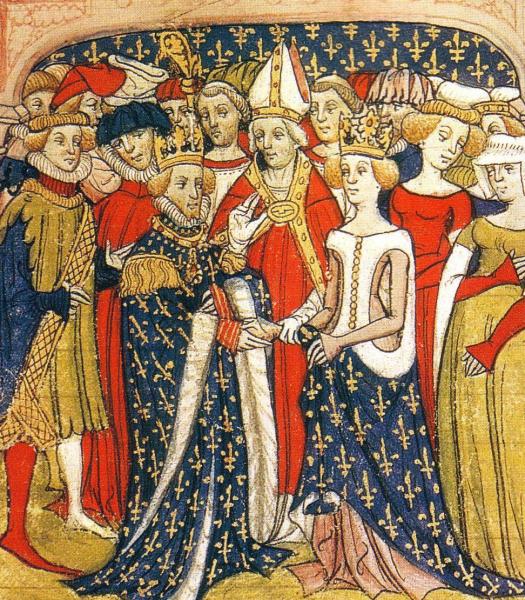
However, to realize in practice the model of kingship when a monarch embodied Pastor of his subjects like Saint Louis, Philippe needed other qualities than good conduct and piety. Yet, he lacked political ideas and imitated the control of Louis IX without using the spirit of this model. Philippe left the direction of the French ship to the crew – his councilors, most of whom he inherited from Saint Louis. His court was one of the first royal courts in medieval France where favorites ruled and opposing factions battled for supremacy and their influence over their sovereign. Some historians call his reign ‘a palace revolution’ due to the intrigues and battles of Pierre de la Broce, Queen Marie de Brabant, Queen Marguerite de Provence, and their allies.
Philippe III’s court was ruled by his great favorite Pierre de la Broce from 1270 to 1278. Appointed the royal great chamberlain, De la Broce was the first of those ministers selected from the commoners or the lesser nobility. Pierre had once been a surgeon or barber in Louis IX’s service. In 1271, Pierre de la Broce was granted the châtellenie (jurisdiction of a lord châtelain), and the lordships of Langeais, Damville, and Charnelles. Pierre’s unlimited authority at court and his wealth caused Marie de Brabant, Philippe’s second queen, and many nobles to hate him.
A medieval Flemish chronicle wrote about Philippe’s policy of favoritism:
“He [Pierre de la Broce] was in all the counsels of the King, every hour he wanted and when the barons had advised the king on what they knew to be good, if Pierre did not like it, then their counsel was not followed.”
Because of their intrigues, Pierre de la Broce was charged with many crimes, one of them being poisoning the monarch’s eldest son, and hanged at Montfaucon. Nonetheless, Queen Marie was suspected of this deed, although it cannot be proved, and despite her craft, she was unlikely to do so. This circumstance also made Philippe III’s second son – Philippe – his new heir. Freed from her husband’s dead favorite, Queen Marie failed to play an important role at court because of the continuing rumors of her complicity in Prince Louis’ death. The power of the Brabant party was undermined by that of Marguerite de Provence and her strong faction, who returned from the shadows. Marguerite was an imperious woman who could be called another She-Wolf of France, like Queen Blanche of Castile: they both had energetic, spirited, dedicated, and brave hearts.
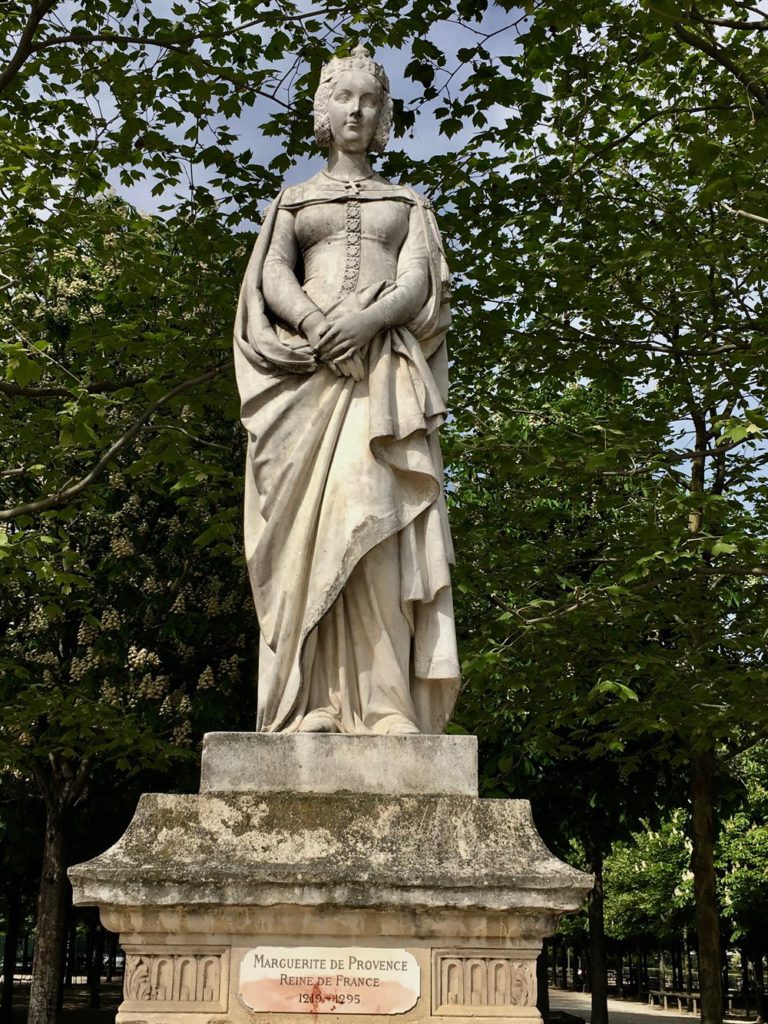
Marguerite had her own kinsmen and followers. She successfully divided the Brabant party and formed a league against Charles d’Anjou and his ally, Robert d’Artois, for she was against their interests in Italy. Marguerite utterly loathed Charles d’Anjou because he removed her from her heritage of Provence by marrying her younger sister – Beatrice, his first spouse. One of Philippe’s few willful decisions was that he managed to keep peace between his mother and uncle.
Marguerite de Provence favored the English alliance, much because of the marriages of Marguerite’s two younger sisters – Eleanor of Provence, wife and consort of Henry III of England, and Sanchia, wife of Henry III’s brother – Richard, Earl of Cornwall. Marguerite kept a close relationship at first with Henry III and then with Edward I of England. Under her influence, the Treaty of Amiens was signed in 1279, which was in fact the settlement of the claims of English kings to Aquitaine. Agenais, which fell to the Crown by the death of Alfonse of Poitiers in 1271, as part of his possessions in Aquitaine and Languedoc, were again ceded to Edward I, which in fact reinforced the Treaty of Paris of 1259. Under Marguerite’s influence, Philippe III signed with the Treaty of Orléans of 1275 with Blanche d’Artois, arranging the matrimony between Philippe’s heir and her daughter, Jeanne, which would lead to the marriage between Jeanne I of Navarre and Philippe IV the Fair, securing the short-lived personal union of France and Navarre.
The court of Philippe III and his policies were directed silently by favorites and factions at different periods in time. At the same time, the skillful men of action, whom Philippe the Bold inherited from Louis IX, were still in charge, despite various influences that dominated at court in turn. Philippe’s another favorite was Mathieu de Vendôme, Abbot of Saint-Denis, of whom Saint Louis was fond – this man became the chief minister after the demise of Pierre de la Broce. Mathieu de Vendôme was appointed regent during the disastrous crusade of Aragon. After him, another churchman – Bertrand de Montaigu, Abbot of Moissac – earned the monarch’s favor.
Again, Guillaume de Nangis commented on the favoritism policy:
“The king [Philippe III] employed the counsel of abbot of Saint-Denis, who determined all the causes of the kingdom, as his father had done. He reigned in France.”
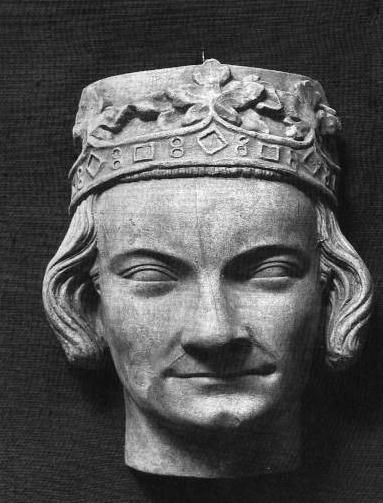
Nonetheless, by temperament, Philippe the Bold was a warlike prince. To punish his enemy, he launched a devastating campaign in the County de Foix, and Roger-Bernard III, Count de Foix, who had previously invaded Toulouse, was captured and held prisoner by Philippe. The king demonstrated his benevolence when he released the count in a year or so and restored the man to his lands. After the Navarrese revolt of 1376 organized by those nobles who did not support their country’s alliance with France, Philippe acted as a magnaminiuos ruler and pacified their anger through effective negotiations. In 1284, urged by Marie de Brabant and Charles d’Anjou, Philippe embarked on the Aragonese Crusade with the papal blessing: he traveled there with his sons (Philippe IV and Charles de Valois) at the head of a large army, but after taking Girona in September 1285, the monarch got infected with dysentery when its pandemic hit the French camp. The Crusade was unsuccessful: the Aragonese armies later defeated the French and retook Girona, while Philippe III died.
Lost in the annals of French history, Philippe the Bold nevertheless was not a meaningless ruler. Saint Louis’ councilors achieved something good: multiplication of military aides and loans, strengthening of control from the central authority over trade and the exchange of gold and silver specie, and the development of trade by attracting merchants from Italy to France. There were no revolutionary changes during Philippe III’s reign, which would be made by his son Philippe IV who succeeded him, but there was a slow, evolutionary development of the feudal kingdom.
All images are in the public domain.
Text © 2020 Olivia Longueville

